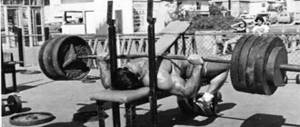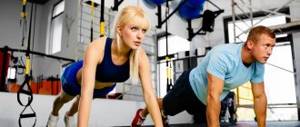The sedentary lifestyle of most modern people leads to extra pounds, which are deposited not only in the abdomen, but also in the hips. For an effective weight loss process, it is necessary to consider not only a nutrition plan, but also fat-burning exercises for the legs. In this article we will look at workouts that can be performed both in the gym and at home. By devoting half an hour a day to this complex, you can achieve excellent results!
The complex described below includes the most effective basic exercises that perfectly work out the main problem areas for women - the inner and outer thighs, including the buttocks. It can be performed as a separate program or diluted with other weight loss combinations.
Basic Rules
Before starting classes, you need to remember the key points, the observance of which will allow you to achieve your goal without harm to your health:
- the first stage is always warm-up;
- loads increase gradually;
- in the first weeks of training, the body adapts, during this period you should be careful about strength training;
- tension and relaxation always alternate;
- the muscles get used to the load within 1-2 months, after the end of the training complex it is necessary to change;
- You can’t exercise if you’re feeling unwell;
- sprains take a very long time to heal, so in case of injury, be sure to consult a specialist.
High-intensity interval training: what is it?
First, it’s worth understanding the meaning of the term. High-intensity interval training is a relatively new system that includes active cardio exercises alternating with strength training.
The workout necessarily includes short sessions of intense cardio, which are then followed by strength exercises. Thus, the muscles are in action all the time, but the heart gets short breaks. Interval training is a kind of shock for the body. A properly selected system of exercises allows you to use completely different organ systems, which has a positive effect not only on your figure, but also on the functioning of the entire body.
Squats
This is a basic exercise for pumping up your legs. Among all the varieties, plie works the inner thigh better than others:
- the legs are slightly wider than the shoulders, the feet are turned to the sides at 45 degrees;
- back straight, arms along the body;
- The squat is performed until the thighs are parallel to the floor, while the knees do not go beyond the toes.
To add weight, you can stand on step platforms or chairs and pick up a kettlebell or dumbbells.
A good alternative is isometric squats or chair squats. When they are performed, there is no increase or decrease in muscle length, and tension is formed due to resistance to a stationary object. It perfectly pumps up the hamstrings:
- standing with your back to the wall, take a couple of steps forward;
- start sliding down until your knees are at a 90-degree angle;
- stay in this position for as long as possible;
- Relax your muscles by shaking your feet.
How does the system work?
In fact, the essence of high-intensity interval training is quite simple. As you know, to lose weight quickly, you need to increase your pulse to maximum - at this moment, oxygen consumption in the body increases significantly, which is accompanied by the oxidation of fat cells. Naturally, for this exercise you need to make it intense, because the body must begin to use spare energy sources, that is, subcutaneous fat deposits.
After a short set of cardio exercises, strength training follows. The workout takes place at an average or slow pace, but due to the load on the muscles, the heart rate is maintained. Fats are actively burned throughout the workout and even after it. During exercise, partial destruction of muscle tissue is observed and upon completion of the workout, the body restores muscle mass, continuing to expend energy obtained from fat.
Lunges
An indispensable exercise for the gluteal group and quadriceps:
- the back is straight, the chin is slightly raised, the arms are bent at the elbows at chest level;
- take a big step with one leg, keeping the knee at a right angle;
- return to the starting position.
The number of repetitions depends on the preparation, usually 20-30 times on each leg. A variation could be walking in lunges when there is a free distance of 10-15 meters. An important point is to turn off inertia, that is, the participation of the hands is turned off, and the entire load goes to the hips and buttocks.
Do the best exercises that burn fat - 20 minutes a day
Perform fat-burning exercises with minimal rest in between. In total you need to complete 3 approaches. Rest 30-60 seconds between sets.
Walking on hands:
- place your feet hip-width apart;
- lower your arms to your sides;
- bend down and touch the floor opposite your feet with both palms;
- keeping your legs straight and your stomach tense, “walk” with your arms as far as you can without lowering your hips;
- stop at the end point and step with your feet in the direction of your hands;
- this is one repetition, your goal is 10.
12 best plank variations - and every muscle in the body is toned
- Forward lunges:
- place your feet hip-width apart;
- place your hands on your hips;
- take a step forward with your right foot;
- slowly lower your body so that your right knee is bent at an angle of 90 degrees, and your left knee almost touches the floor;
- stop;
- push off into IP;
- repeat the lunge on your left leg;
- Your goal is 10 lunges on each side.
- Jumping:
- place your feet a couple of centimeters apart;
- put your hands at your sides;
- while jumping, simultaneously raise your arms up and spread your legs to a distance slightly greater than shoulder width;
- without stopping, quickly return to the IP;
- repeat 15 times.
- Bridges:
- lie on your back;
- keep your arms at your sides;
- bend your legs at the knees, resting your feet on the floor;
- tighten your buttocks and lift your hips off the floor, pushing through your heels;
- Make sure your body forms a straight line from your knees to your shoulders;
- straining your buttocks and stomach, hold for a couple of seconds;
- slowly lower yourself to the floor in IP;
- repeat 15 times.
- Leg raises:
- lie on your back;
- place your hands on the floor behind you;
- lift your legs straight up directly above your hips, keeping your feet together;
- tighten your abdominal muscles to lift your hips about 5 cm from the floor;
- stop and then slowly lower your hips and legs to the floor;
- repeat 15 times.
- Climber:
- lower yourself into a plank position;
- keep your legs and arms straight;
- shoulders - above the wrists;
- contract your stomach to lift your right foot and slowly bring your right knee toward your left shoulder;
- return to IP;
- goal: 15 repetitions on each leg.
While performing the fat-burning exercises described above, monitor your well-being. Estet-portal.com warns that in case of any contraindications, it is better to resort to more gentle exercises and be sure to consult a doctor.
Romanian deadlift
In the classic version, it is performed with a barbell, the body is in tension. In a standing position, the knees are slightly bent, there is a slight deflection in the lower back. Bend forward, while the bar moves along the body to the middle of the shin. You can use dumbbells at home. This type of bench press is contraindicated for spinal injuries.
At the end of each leg workout, you need to relieve tension; a massage or contrast shower is perfect for this. This is especially important for varicose veins.
By devoting half an hour a day to sports, you can get rid of extra pounds; it is not at all necessary to exhaust yourself with long strength training. High-quality, clean nutrition will allow you to maintain the achieved results.
The benefits of strength training for weight loss[edit | edit code]
Very often in fitness clubs you can observe the following picture: women, pursuing the goal of weight loss, walk for hours on paths or ellipses, bypassing weight machines and especially free weights for a kilometer. Sometimes this is supplemented by several layers of sportswear, special “fat-burning pants” or even cling film wrapped around the stomach or thighs. This approach to training is based on the stereotype that strength training will certainly lead to a strong gain of muscle mass and loss of femininity, so this is the “male option.” In fact, the use of cardio training, albeit long-term, can greatly slow down the process of achieving the cherished goal of reducing the fat component of the body, and in the case of using films, additional sports suits, etc., even harm your health.
Cardio training[edit | edit code]
To understand why this happens, you should consider the physiological processes that occur in the body during various types of training. First, let's look at cardio training.
Here the following pitfalls lie in wait for someone losing weight. First of all, the duration of the workout. As is known, there are the following types of energy supply to muscle activity: creatine phosphate, glycolysis, carbohydrate oxidation and fat oxidation. Accordingly, in this situation, since the goal is to reduce the fat component, we are interested in using fats as a source of energy, that is, their oxidation. Each of the above energy supply mechanisms has its own speed of deployment, and fat oxidation reaches its maximum 20 minutes after the start of training in a well-prepared person, and 30 or more minutes later in an unprepared person. Accordingly, in order to burn fat, you need to train for at least 40 minutes, and of this time, 15-20 minutes will be “useful”.
Secondly, in an hour of walking along a path (or ellipse), the average person spends about 400 calories, which almost any modern exercise machine equipped with a display cheerfully informs him about at the end of the workout. If you consider the fact that 1 gram of fat used provides about 9 calories, it is easy to calculate that a person will burn 44 grams of fat during such a workout. Accordingly, to lose at least 2 kg, you need to sweat on the treadmill for about 45 hours. And this is a rough calculation: if you take into account that fat oxidation reaches its maximum by the 20th minute, then you will have to train even more.
In addition, fat burning, that is, the use of fat as an energy source, occurs most intensely in a certain heart rate zone. There are special formulas for calculating this zone, the simplest option is as follows: the range from (220 - age) × 0.6 to (220 - age) × 0.8. Accordingly, for a woman aged 30 years, the target heart rate will be in the range from 114 to 152 beats per minute.
Lastly, regarding wraps and layering. Fat burning is, firstly, not a local process, that is, you cannot remove fat only from the thighs or only from the abdomen, and secondly, fat does not heat, like, for example, oil in a frying pan. This is a chemical process, lipolysis, which is triggered by hormones that have lipolytic properties. And hormones circulate in the blood throughout the body, so the fat layer decreases evenly. Extra clothing puts extra stress on the heart and risks dehydration due to increased sweating, and the film around the abdomen can lead to overheating of internal organs.
Strength training[edit | edit code]
Now let's look at strength training from the point of view of the physiological processes occurring in the body.
In muscle tissue, like in any other tissue of the body, processes of cell synthesis and breakdown constantly occur. If we abstract from age, health status, etc., at rest these processes are in balance. During strength training, breakdown begins to prevail over synthesis. However, immediately after the end of training, during the recovery period, active protein synthesis of muscle tissue begins. This is a fairly energy-consuming process, which is achieved mainly through the oxidation of fats (it is this method of energy supply that predominates during normal household activities and at rest). Here it is worth especially noting the fact that protein synthesis after training does not necessarily mean an increase in muscle mass: firstly, the cells destroyed during the training must be restored to the state that was before it; secondly, the increase in muscle mass directly depends on anabolic hormones, primarily testosterone, and women do not have it in such quantities that would ensure a serious increase in muscle mass. Therefore, if you train in a high-repetition mode that is not aimed at increasing muscle volume, you should not expect strong gains.
In addition, during the recovery period, glycogen reserves spent during strength training are actively replenished, which also stimulates additional energy expenditure. Depending on the intensity of the workout, this process can take up to 72 hours.
In this regard, a very important advantage of strength training in terms of fat burning is the acceleration of metabolism. The constant need for protein synthesis and restoration of glycogen reserves significantly increases calorie consumption even at rest, and in this state, as is known, energy supply comes mainly from fat oxidation.
Of course, you shouldn’t completely give up cardio training and frantically grab the barbell. Cardio training is necessary for modern people due to physical inactivity and a sedentary lifestyle for training the cardiovascular system, preventing vegetative-vascular dystonia, hypertension, etc. In addition, cardio immediately after strength training is very effective for fat burning. During strength training, glycogen is consumed, since energy supply comes mainly from glycolysis, therefore, by performing 25-30 minutes of cardio after strength training, we force the body to burn fat: the transition to fat oxidation during such cardio loads is much faster.
The conclusion that can be drawn from all of the above: representatives of the fair sex should not be afraid of strength training, fearing the appearance of huge muscles - this is our ally in the fight against excess weight. A well-designed program, including both strength and cardio training, will allow you to quickly achieve your cherished goal.
Speed or fartlek games
This system was created in Sweden - it was with its help that athletes were prepared for the Olympic Games. Fartlek involves some element of competition, so at least two people must take part. The program consists of several stages:
- First, ten minutes of jogging (helps warm up the muscles and prepare the body for stress).
- This is followed by 10 minutes of intense running, during which the person must run at maximum speed.
- This is followed by a short break, giving you the opportunity to restore your breathing - 5 minutes of brisk walking.
- Next, the athletes run 100 meters in a straight line.
- Another 100 meters of racing, but up the slope.
- The final stage is 5 minutes of brisk walking in order to gradually slow down the heart rate.
Naturally, this program is not suitable for beginners, since the loads are quite intense.
Contraindications to mastering the technique
Of course, before starting any workout, you should consult with a specialist. It’s worth saying right away that such exercises may not be suitable for beginners in fitness. High-intensity interval training is still designed for people who already have some experience and training. If you come to the gym for the first time, then you should first prepare your body by working out in an easier way.
High-intensity interval training is contraindicated for people with serious diseases of the musculoskeletal system and cardiovascular system. In addition, you should refuse classes if you are still in the rehabilitation period after an injury. This system cannot be used if you are too obese - you first need to lose weight with standard training and only then begin more intense exercise.
How to eat properly during training?
High-intensity interval training for burning fat is indeed effective, but an equally important element in the fight against excess weight is proper nutrition. To achieve the maximum effect from sports activities, it is necessary to adjust your diet.
In fact, the menu recommendations from experts are quite standard. It is worth giving preference to protein foods, as well as foods that contain complex carbohydrates (porridge, oatmeal, vegetables and fruits, except sweet grapes). It is worth limiting the amount of sugar, baked goods and other flour products.
It is not recommended to eat immediately before training. By the way, it is best to do exercises in the morning or afternoon. 15 minutes after finishing, you need to restore the carbohydrate balance - a glass of apple or orange juice, citrus fruits are suitable for this. Next, you need to restore protein reserves to avoid the development of a catabolic effect, in which the body breaks down its own muscle tissue. After 40 minutes you need to take a protein meal or a protein shake. And after 1.5 hours you can start lunch or dinner, which, again, should include protein and carbohydrate foods (for example, chicken breast and salad).
Additional useful information
High-intensity fat-burning interval training really gives good results. However, people are advised to adhere to some rules:
- Training should not begin without preliminary warming up and warming up. This applies not only to interval programs, but also to any other programs. First, you can go for a short jog, then do a few exercises to stretch your muscles. This part of the training will take no more than 10 minutes, but will significantly reduce the risk of injury.
- During classes, be sure to have water with you. You shouldn’t consume it in large quantities, but you should definitely take a few sips from time to time.
- You should always keep in mind how long high-intensity interval training should last. For beginners it’s 10 minutes. As your endurance increases, the time can be increased, but not more than 30 minutes. You need to exercise 3-4 times a week and in no case often. Exercising too often and for too long can exhaust and injure your muscles.
- It is important to choose the right exercises and give your best during classes. As experienced instructors say, a 10-minute workout, in which a person does everything possible, is much more effective than a 30 or 40-minute session at half strength.
It is worth understanding that high-intensity interval training, like any other fitness program, cannot provide instant results. The consumption of fat mass and muscle building occurs gradually, as evidenced by numerous reviews. Exercising regularly and eating right is the only way to improve your figure.
High intensity fat burning interval training in the gym
Of course, it is best to exercise in the gym, under the supervision of an experienced instructor who will select the exercises and their intensity and give some useful tips. By the way, strength and cardio exercises in the gym can be varied. For example, high-intensity interval training on an elliptical and other machines gives good results.
In addition, the program can include exercises with a barbell, kettlebells, rope climbs and other loads that are difficult to reproduce at home. Another type of training is boxing, in which the help of a trainer is also necessary.











